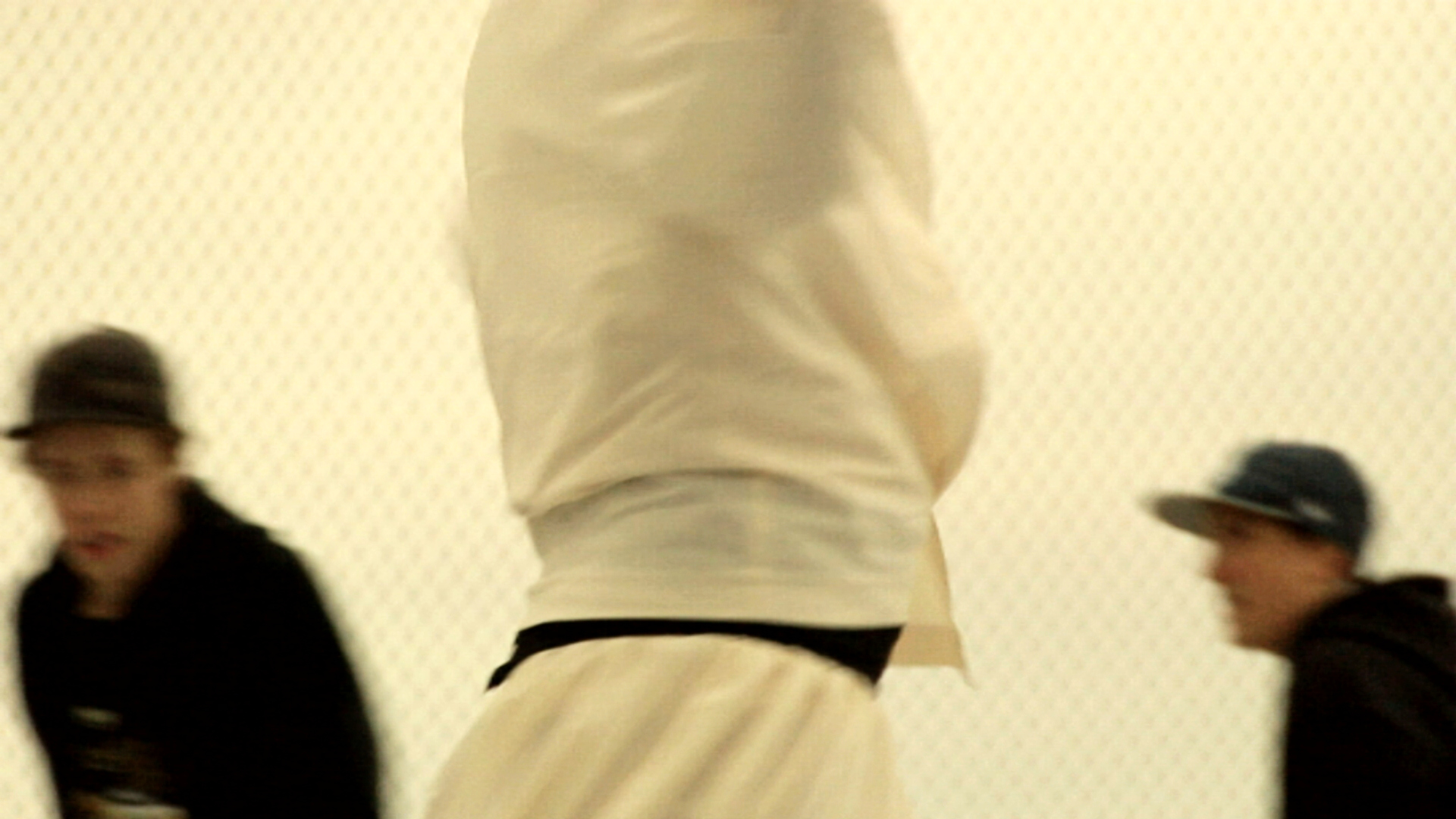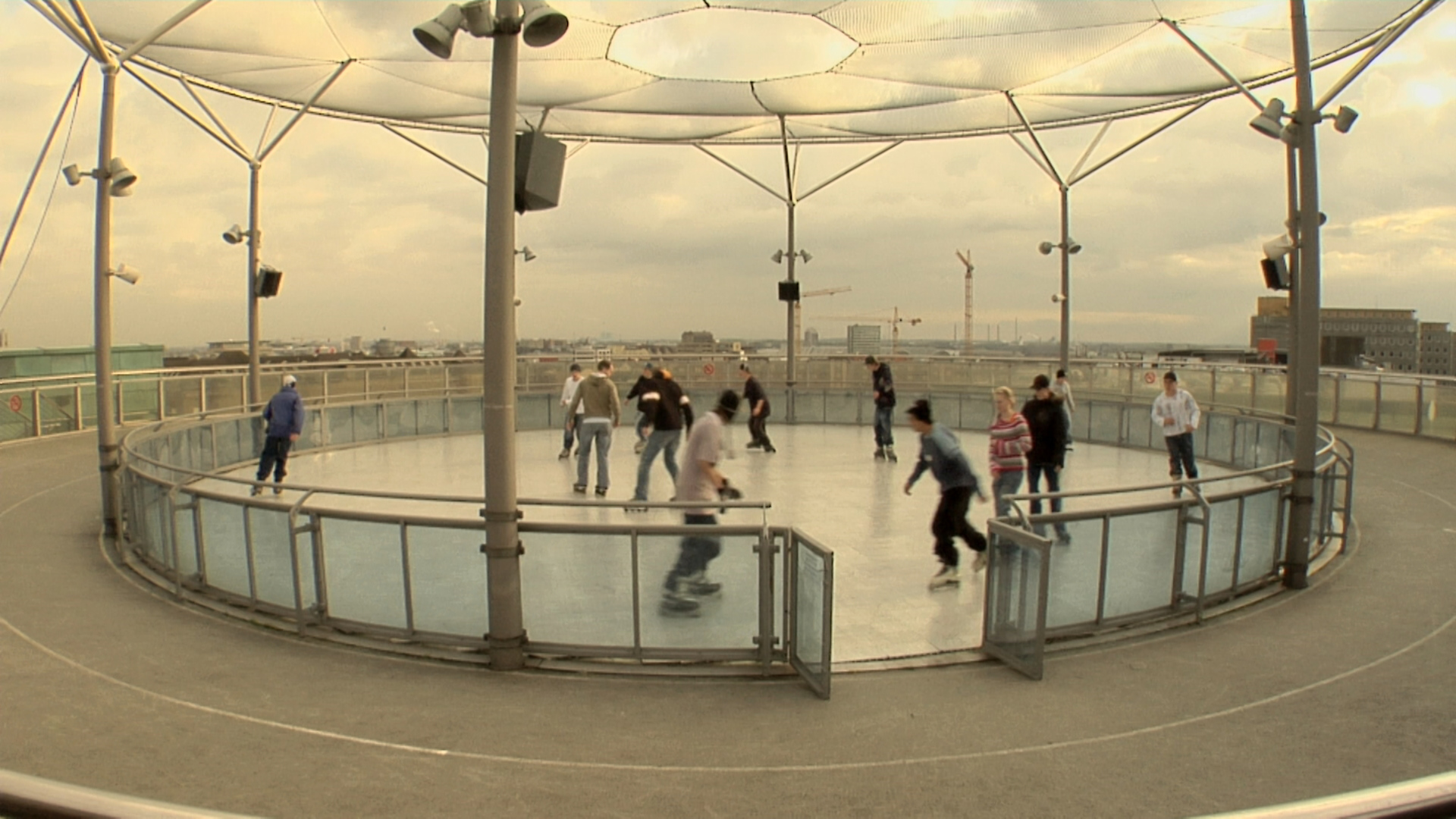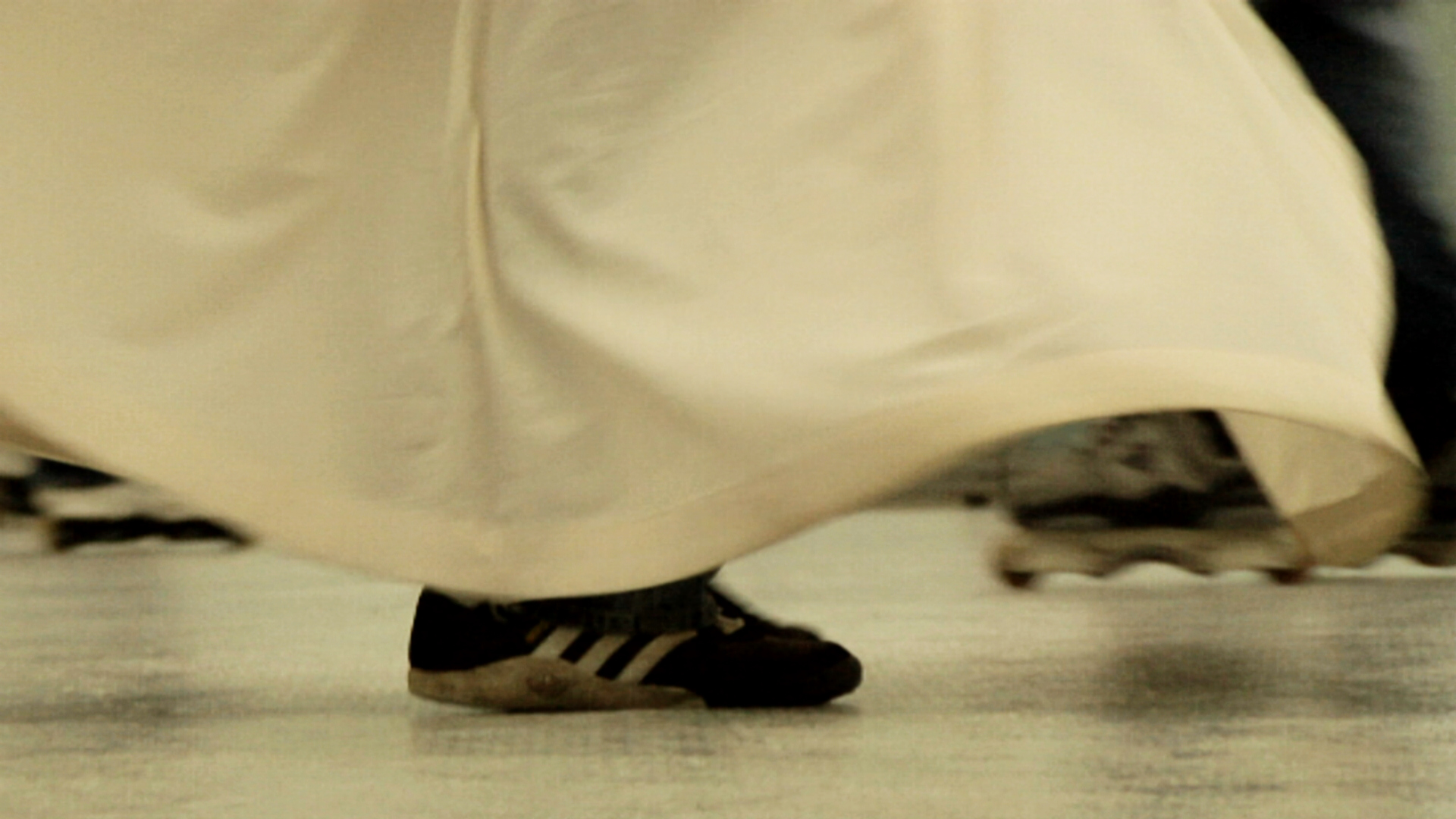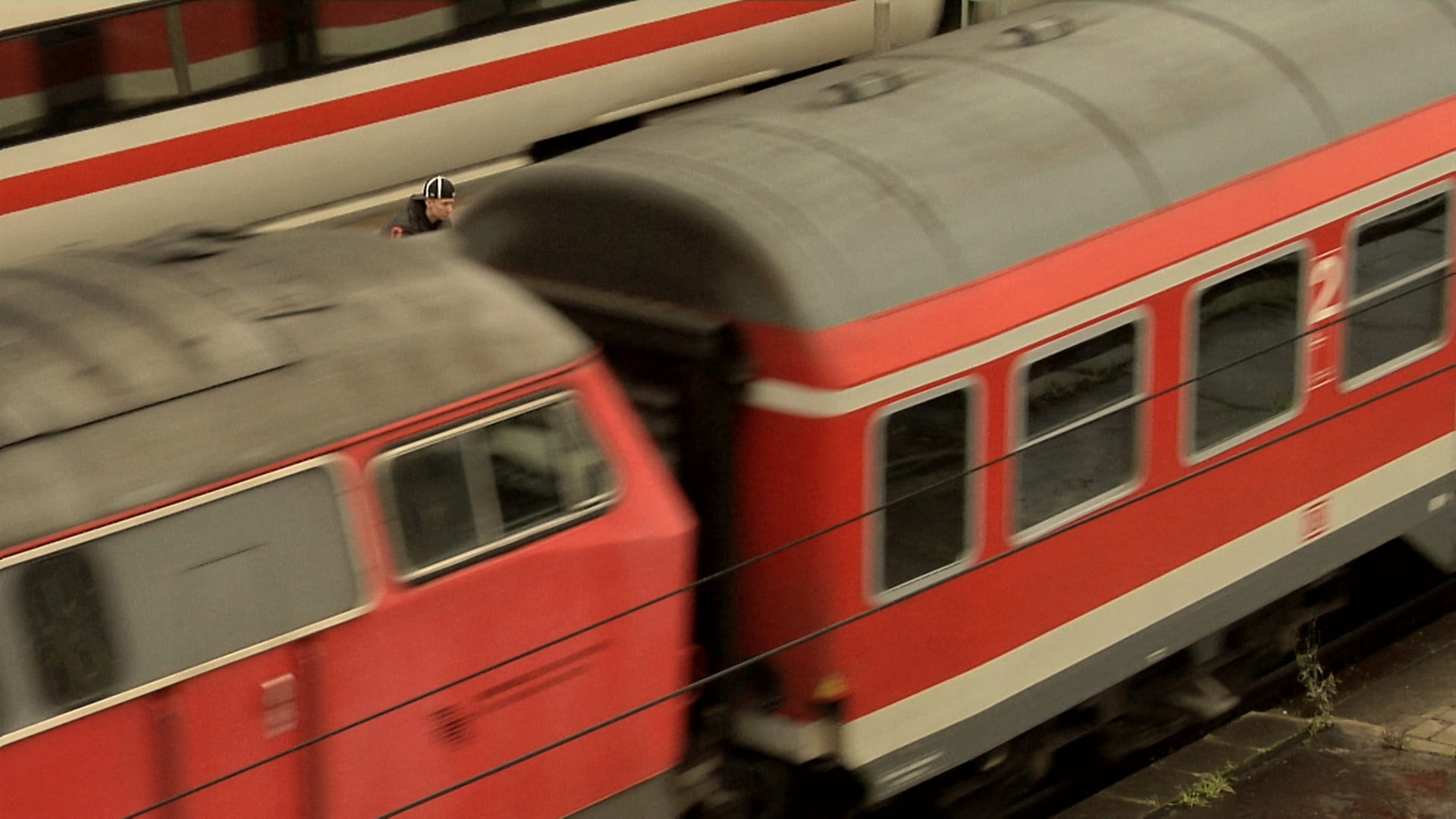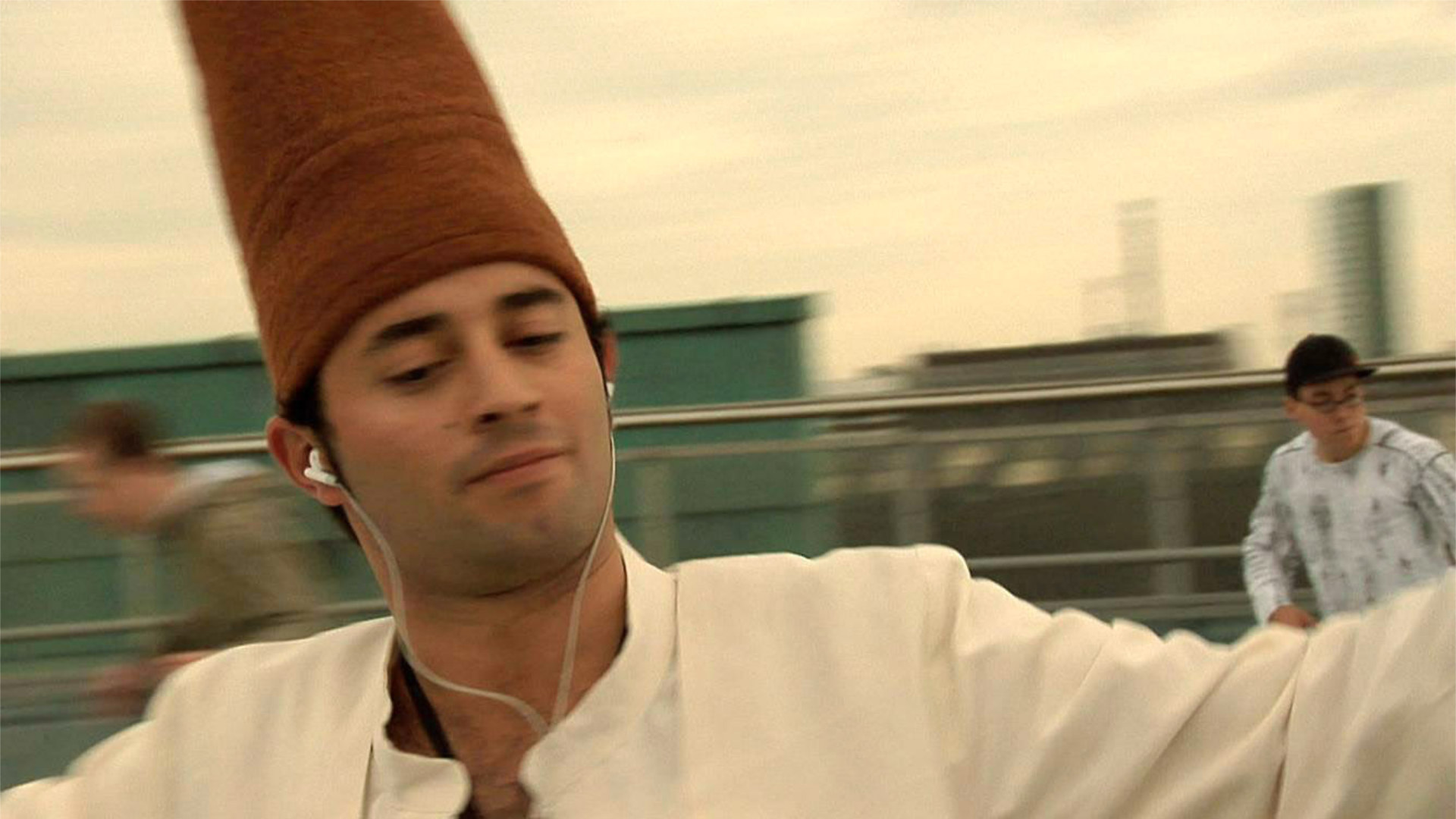
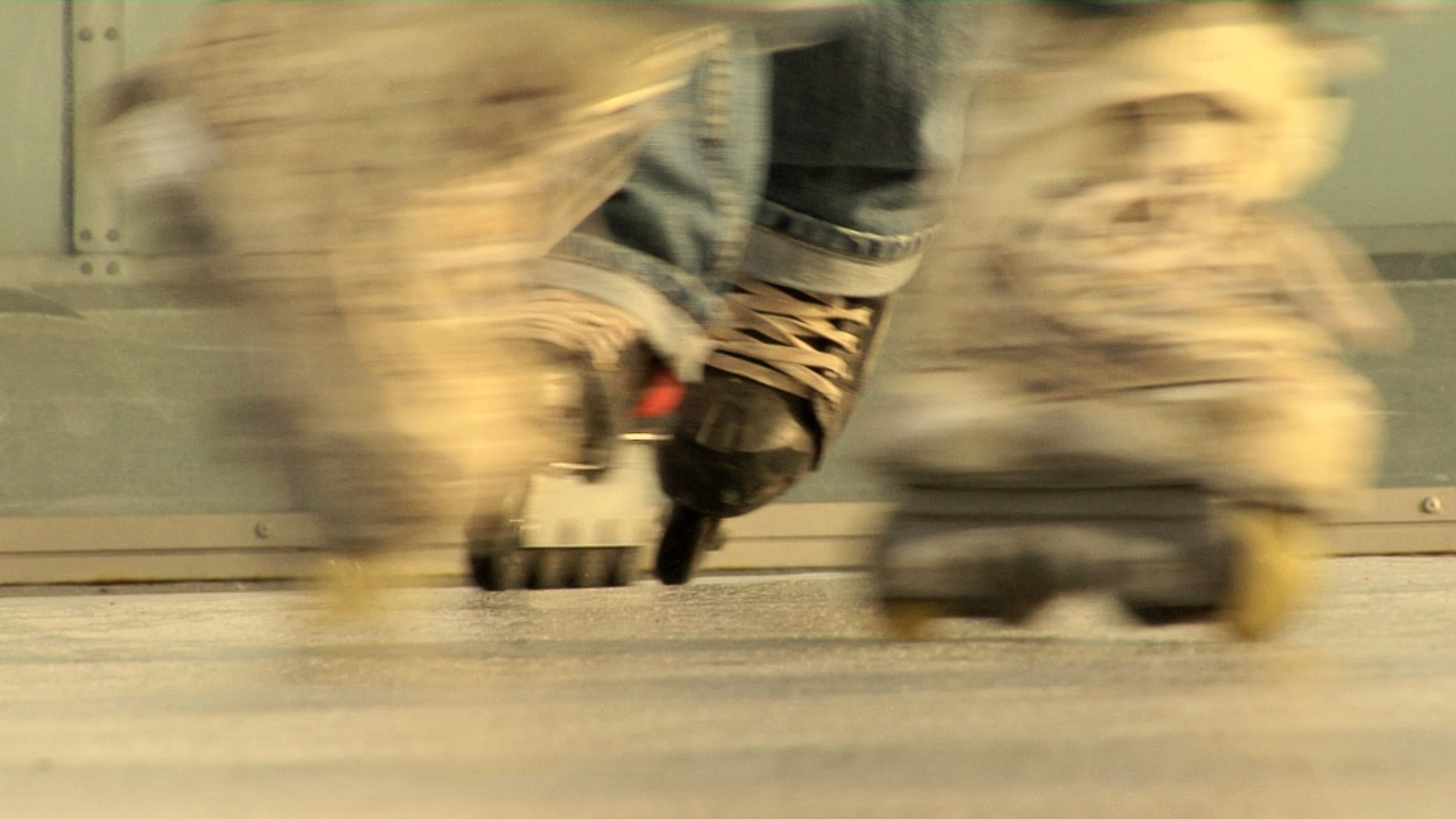
UNTER FREIEM HIMMEL / IN THE OPEN AIR
Shortfilm, 2006-2007, 16:9, HD, 6 min. 41 sec., video loop
Three Thoughts on Aurelia Mihai’s New Work In the Open Air
by WULF HERZOGENRATH
I. The Rotating Camera
Aurelia Mihai shows young people the way they want to be shown. The images are fresh and speak for themselves, but we also feel a group-consensus that keeps us, we who are looking “in” from the “outside”, at a distance. It is a distance that won’t let us make up our minds whether these scenes are a staged artificial world, because our imagination resists regarding a whirling dervish amidst a group of young inline skaters as real. Irritation arises on two levels: first, there is the ambivalence between a commonplace scene and a “white” apparition, and second, there is the contradictory role in which the observer is placed. Initially one perceives a filmed group-scene from the outside, and then one finds oneself right in the middle of the group of teenagers, effectively becoming an actor too. Nevertheless, the film’s subject soon becomes clear: a boy from the group develops into an isolated, introverted dervish dancer; then again, as an accepted member of the group, he leaves unobtrusively.
The rotating movements, the circling, the conquering of space — this is actually the videotape’s primary leitmotif. For us, space develops from the imagination of depth, from illusion — especially in an image space that is also obviously a screen, and particularly today when flat screen monitors are intentionally hung on walls like paintings. The spaces that Aurelia Mihai opens up with her rotating movements transcend the image space. Incessant turning is hard to depict, for a screen demands spatial reality. Yet the rotating movements intensify as the speed increases. The dervish whirls faster and faster while the camera circles around him. Skaters on two contra-rotating paths circle around both camera and dervish, and the city skyline dissolves as a result of the movement.
Aurelia Mihai tells her story without words in a quasi spherical movement in space. Beginning with an extreme long shot at the railway station, she waits for the young people and follows them in a vertical movement up to a platform. There the protagonists describe their circles around their own vertical axis, then leave the rotunda with a movement in the other direction. Back at the starting point, the railway platform, the presentation of a circular geometric form, which the camera has described, ends. The sphere is complete.
II. Many-layered Interpretations
Aurelia Mihai’s videotape Unter freiem Himmel [In the Open Air] can be interpreted and described in very different ways:
a) As a short, real episode, seemingly recorded by chance: youngsters arrive and pursue their leisure activities —inline skating and dancing like a dervish. The camera is discreet and distanced, none of the young people are singled out, and there are no dialogues. An everyday observation? (...)b) As a staged piece of artistic theatre: an a–b–a structure. Both the beginning and the end are seen strictly from a distance, and therefore the movements are more relaxed. The middle section becomes increasingly dramatic, gets closer to the actors, the rotating movements become more clipped and therefore increasingly wild. And the dervish — a dancer amidst inline skaters — this can only be interpreted as staged. (...)
c) As a parable for the co-existence of different cultures and religions: they arrive together, they leave together, and also in the visible differences of the circling youngsters — religion or sport — they are close to each other and united: the rotating movements do not collide, they respect each other. The wild inline skater and the mevlevi in trance, the modern teenager and the tradition-conscious teenager, the Central European and the dervish from a mystic Muslim culture!
d) As a specific formal solution to the problem of how to display spatial movements on a screen. The diagonals set the way there and back, the rotations create space, although the projection remains within the confines of the screen: circulation within the space is dissolved by cuts, but it is only the eye of the observer that creates the space as an illusion. (...)
III. Narration and Structure, Scene and Image Space
To tell a story, and at the same time show loop-like sameness of rotating movements, would appear to be irreconcilable opposites. Aurelia Mihai, however, combines them with consummate ease, using the strongly traditional, musical form “a–b–a”; in this case as slow-fast-slow sequences where the middle section is differentiated and varied. It is fascinating to watch how Aurelia Mihai creates archaic myths with contemporary images, and combines content with structure. And, although the work contains small loops, she even tells a story. The youngsters going round and round do not appear formalised; the strictly designed series of images are enhanced with hints of allusions. In her work Aurelia Mihai combines fiction with authentic material, and personal experiences with archaic myths. At the same time, she includes social and historic connections, as well as the formal conditions of conceptual minimal art within her partiality for tight structures.
